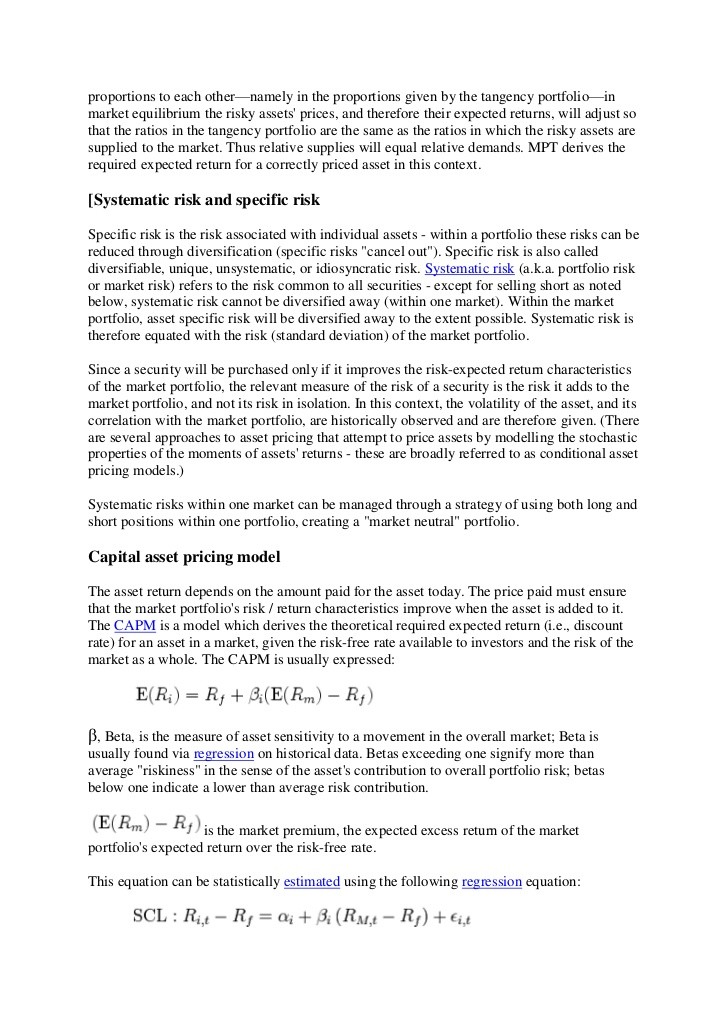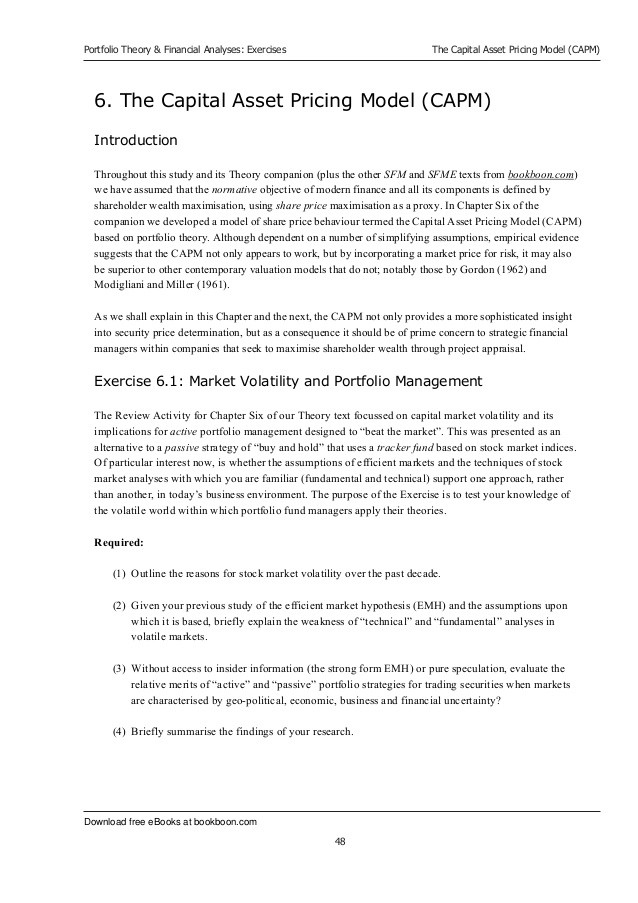Portfolio Theory and the Capital Asset Pricing Model
Post on: 22 Сентябрь, 2015 No Comment

You must have javascript enabled to view this website. Please change your browser preferences to enable javascript, and reload this page.
Portfolio Theory and the Capital Asset Pricing Model
The basic principles of portfolio selection boil down to a commonsense statement that investors try to increase the expected return on their portfolios and to reduce the standard deviation of that return. A portfolio that gives the highest expected return for a given standard deviation, or the lowest standard deviation for a given expected return, is known as an efficient portfolio. To work out which portfolios are efficient, an investor must be able to state the expected return and standard deviation of each stock and the degree of correlation between each pair of stocks.
Investors who are restricted to holding common stocks should choose efficient portfolios that suit their attitudes to risk. But investors who can also borrow and lend at the risk-free rate of interest should choose the best common stock portfolio regardless of their attitudes to risk. Having done that, they can then set the risk of their overall portfolio by deciding what proportion of their money they are willing to invest in stocks. The best efficient portfolio offers the highest ratio of forecasted risk premium to portfolio standard deviation.
For an investor who has only the same opportunities and information as everybody else, the best stock portfolio is the same as the best stock portfolio for other investors. In other words, he or she should invest in a mixture of the market portfolio and a risk-free loan (i.e. borrowing or lending).
A stock’s marginal contribution to portfolio risk is measured by its sensitivity to changes in the value of the portfolio. The marginal contribution of a stock to the risk of the market portfolio is measured by beta. That is the fundamental idea behind the capital asset pricing model (CAPM), which concludes that each security’s expected risk premium should increase in proportion to its beta:
Expected risk premium = beta market risk premium
The capital asset pricing theory is the best-known model of risk and return. It is plausible and widely used but far from perfect. Actual returns are related to beta over the long run, but the relationship is not as strong as the CAPM predicts, and other factors seem to explain returns better since the mid-1960s. Stocks of small companies, and stocks with high book values relative to market prices, appear to have risks not captured by the CAPM.
The arbitrage pricing theory offers an alternative theory of risk and return. It states that the expected risk premium on a stock should depend on the stock’s exposure to several pervasive macroeconomic factors that affect stock returns:

Here b ‘s represent the individual security’s sensitivities to the factors, and r factor rf is the risk premium demanded by investors who are exposed to this factor.
Arbitrage pricing theory does not say what these factors are. It asks for economists to hunt for unknown game with their statistical toolkits. Fama and French have suggested three factors:
- The return on the market portfolio less the risk-free rate of interest.
- The difference between the return on small- and large-firm stocks.
- The difference between the return on stocks with high book-to-market ratios and stocks with low book-to-market ratios.
In the FamaFrench three-factor model, the expected return on each stock depends on its exposure to these three factors.
Each of these different models of risk and return has its fan club. However, all financial economists agree on two basic ideas: (1) Investors require extra expected return for taking on risk, and (2) they appear to be concerned predominantly with the risk that they cannot eliminate by diversification.
Near the end of Chapter 9 we list some Excel Functions that are useful for measuring the risk of stocks and portfolios.














